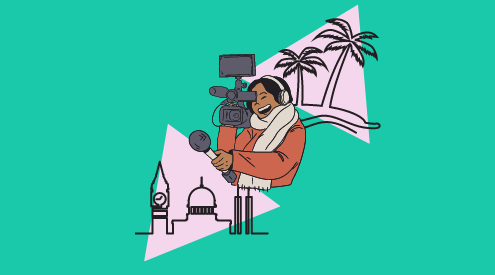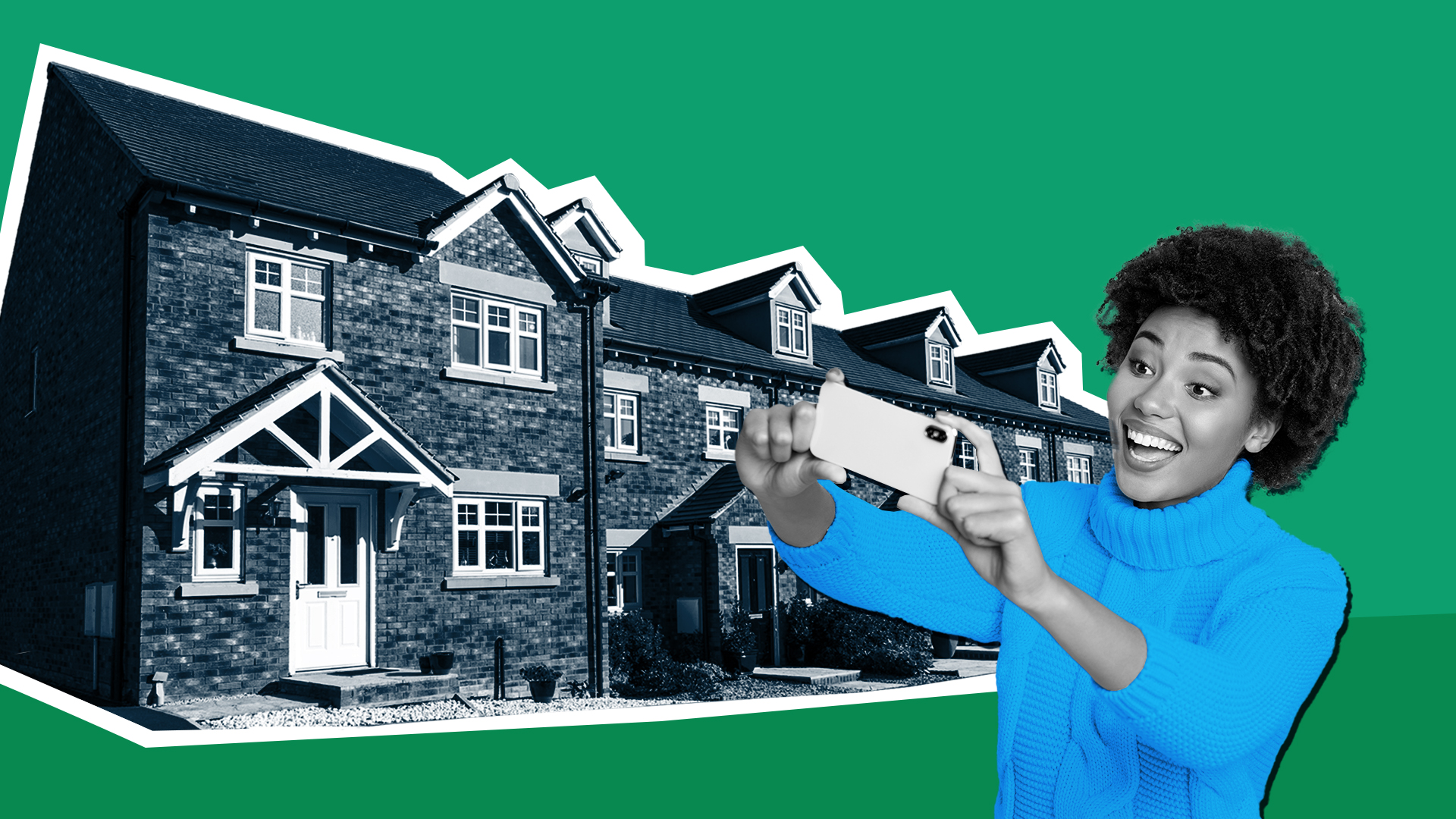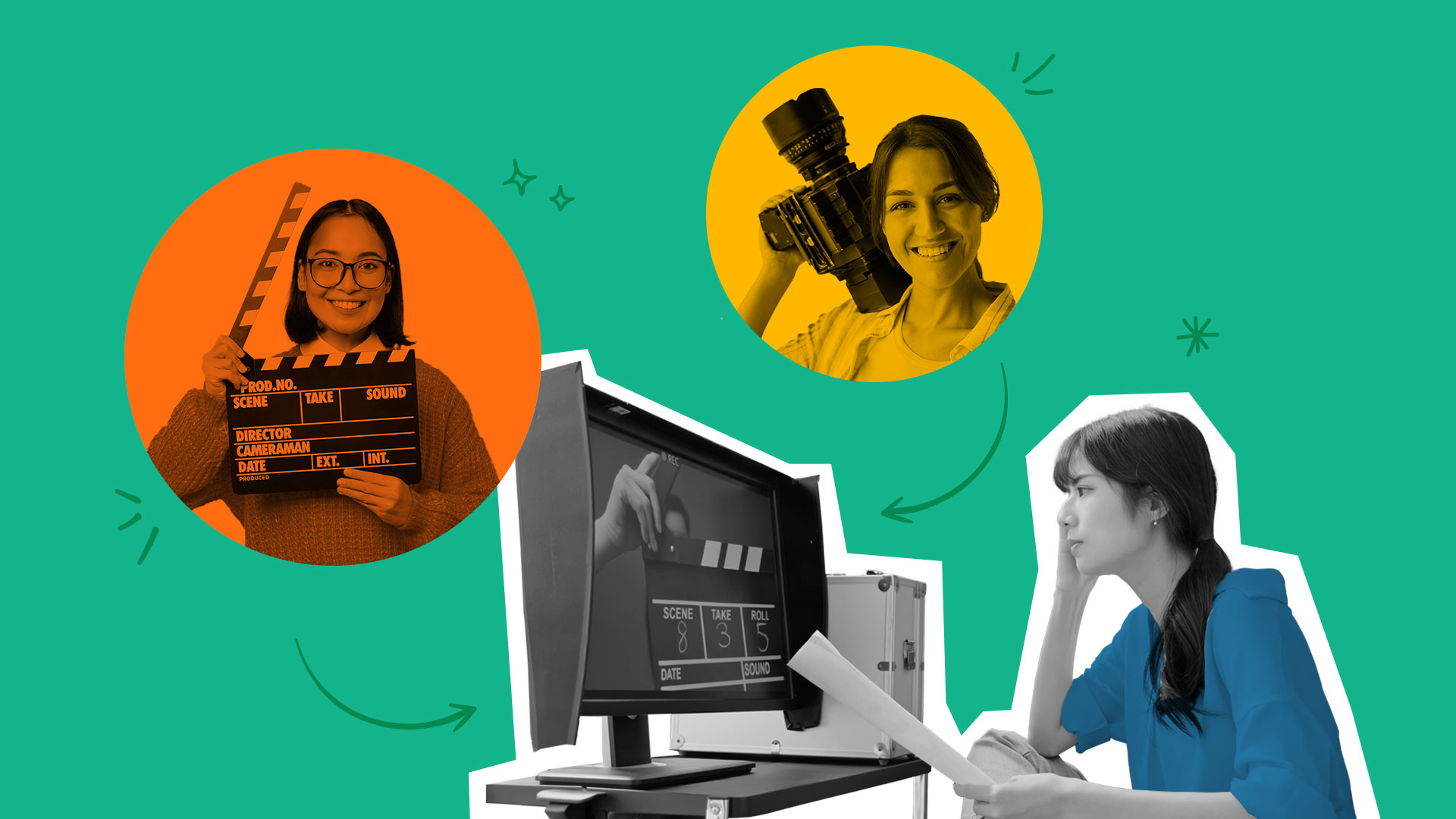Establishing Shots #0: Lauren Naylor Orso

Welcome to Establishing Shots, an interview series where we turn a spotlight towards the diverse talent that comprise QuickFrame’s Maker Community, emphasizing the personality and artistry behind some of our top video content makers.
In April of 2021, we talked with QuickFrame maker Lauren Naylor Orso, a freelance multi-hyphenate photographer/director/cinematographer/producer who is also a member of our Maker Community, has collaborating with some of QuickFrame’s top health and wellness, and beauty partners.
This discussion has been edited for clarity.
Tell us a little about yourself.
I am a photographer, director, and producer based in Los Angeles. I grew up in Florida, and I moved to Portland, Oregon as soon as I graduated college to explore the west side of the states. A couple years after that I was craving something a little more fast paced and exciting so I moved to New York where I lived in Brooklyn.
I officially started doing photography as more than just a side passion when I began working as a freelancer doing small gigs before dipping my toes into the commercial world. But New York was just too cold for me, so I moved to Los Angeles. I’ve been here for six years, and I’m a full time freelancer now. It’s a roller coaster ride everyday, and I love it!
Learn More: Social Media Video Ad Specs & Placements Guide
Before you became a full time freelancer, how did you balance out your artistic and professional life?
When I moved to New York I got hired at Adorama which is one of the biggest photo retailers in the US. I got hired to do sponsorship and coordinating in their marketing department, so I was kind of balancing that full-time, 9 to 5 office job while also balancing trying to jumpstart my freelance career on the weekends, afterhours, or taking off from work when I could. But it was definitely challenging.
When you dropped the full-time job, and became full-time freelancing, what were the challenges you experienced making that transition. How cold is the ice water that they are jumping into?
It’s pretty cold! But it gets warmer, as you go on. I never felt like I jumped right in, it was more of a gradual change. When I first moved to LA I had a job doing photo editing full time, and then I started cutting my hours down from three days, to two days, until it was like “Ok, I don’t need this anymore!” It was a gradual step by step process until I felt super comfortable. Well, actually I’m lying when I say it’s super comfortable. It’s never super comfortable, it’s always a little bit risky but that’s kind of the fun of it! Just trusting yourself, trusting your gut. It’s a struggle, but it’s definitely worth it in the end.
How would you describe your own personal creative process?
It depends on the project, but if it was a personal project that I get the opportunity to mold from start to finish, most of the time it’s just completely random where the concept floats into my head. Sometimes I’m listening to music and it’s a line in a song that hits me, or things that I see in the world–like lighting hitting a puddle in a certain way–and it gets my brain spinning. I find myself scribbling down ideas in my notebook or in my phone trying to remember what I have in my head, and make use of it in the future.
From that general concept, I can then start creating a mood board with inspiring images to build the visual aspects of it. From there it’s gathering the team, the crew, the location, and all those fun logistical things.
On the day of the shoot, most of the time all the creative planning goes down the drain and is replaced by on the fly ideas, capturing what’s happening in the moment. To me, when shoots happen like that, it has the best outcome.
When you have these on the fly ideas with a collaborative team, the process feels more natural than just getting this shot and this shot and this shot, which can feel contrived. I try to stay in the moment on shoot days as much as possible.
MORE CREATIVE TIPS: Using Storyboards to Keep Your Production on Track
When we think of photographers, we think of a singular artist, but it sounds like you’re very collaborative, especially during shoots.
Yeah I have a great team of people here in LA that work with me. My work wouldn’t be the same without them.
When photography do you find interesting, and how do you translate that to the product photography you do with brands?
When I first started I was very into street photography, but I was also into more huge opulent staged concepts, with crazy lighting and huge crews, like Gregory Crewdson’s work. I always aspired to do more conceptual shoots when I first started out. The only models I had were my friends, so I luckily had all these beautiful friends who were willing to jump in front of the camera for me. So that’s how it all started, shooting friends, building concepts, and trying to take it to the next level without having a huge budget which was super difficult. But the friends turned into professional models, the models turned into talent, and next thing you know I’m a director shooting video and it’s just been this crazy wild ride that’s led me on many different paths. It’s been a lot of fun.
How important is it for you to make sure that you are able to convey a part of your own personal aesthetic, within the confines of the brand’s requirements?
I think that’s one of the most difficult challenges when you’re working with a brand and you’re trying to stay true to your vision and stay true to yourself. It can definitely be a balancing act. Of course you want the brand to be happy with the content you’re producing for them, and they’re paying you of course; you have to follow what they say for the most part.
But there’s also a side of you that’s like “Well you hired me because you liked my vision, and that’s what you want to aspire for this content that we’re making together.” so it’s definitely a balancing act, and one of the hardest things to me when you are shooting with brands.
Do you ever try to sneak in some of your own personal style trademarks?
Yeah, I definitely try, sometimes I’ll get a no-no from the brands, but a lot of the times especially with brands that are open to ideas on shoot days, and open minded to more than just the typical stuff, that’s when they’re willing to collaborate and they do take your vision into consideration.
Do you find that brand’s are more receptive today to the makers’ vision?
It depends. They are more willing to listen to your ideas than not, for the most part. Especially nowadays, there’s so much content being made and everyone wants to be unique and different. So when you do have a unique idea or you do want it to feel a little bit more than the standard commercial, brands are more willing to have an open mind.
Major Brands. Reliable Payments. Tons of Opportunities. Learn Why You Should Be a QuickFrame Maker.
How has your work been impacted by the socio-political events of the last five years?
It’s affected me personally, and of course that will affect your work if you are an artist or a content maker, because you are so tied to what you create. They’re almost interchangeable. I’ve definitely felt the shift in our society from politics to Covid to technology and social media.
I’ve always been one to question things and dive deep into why there are these big issues. Just seeing how tumultuous the world can be is hard on anyone if you take it to heart. That definitely has an impact on the creative side of me, and I think that’s been a loud part of my work whether it’s anger from it all, or just trying to escape from it all. It’s about making your work feel like escape.
What would you say to someone trying to get their foot in the door to this industry you’ve found yourself in?
If you want to make a career out of photography or video content creation or directing, producing, or anything in the creative field: keep doing projects for yourself. Keep gaining that experience, keep molding your own unique style. That may mean planning and creating work for you that isn’t paid, but eventually the idea is that if you stay true to your vision, and you keep producing your work, clients or brands will see it and they’ll want that vision and they’ll be willing to pay you for it. That’s how it is in this industry.
I still do creative shoots that aren’t paid all the time. It’s just a part of it. Without those I’d fall apart because I’d just be doing commercial work, not every day, not fulfilling that creative void inside of me. It’s super important. Just because you’re not being paid doesn’t mean it’s not important.
QuickFrame is looking for experienced video content makers who believe that every brand deserves well-made video. Join our maker community today!
Do More with Video
Learn how we can help you produce more quality videos affordably and at scale.


